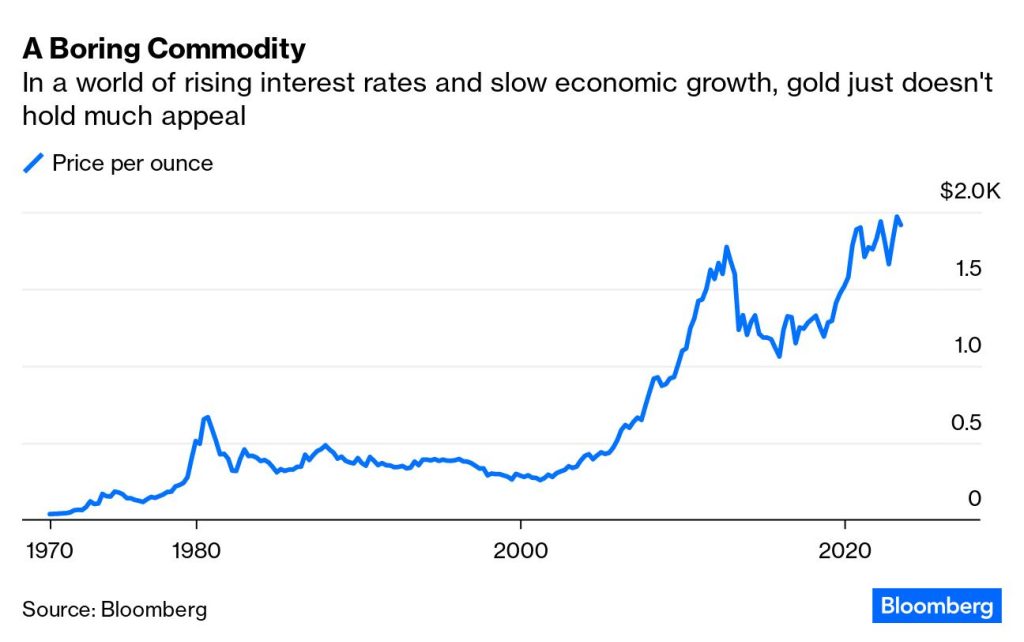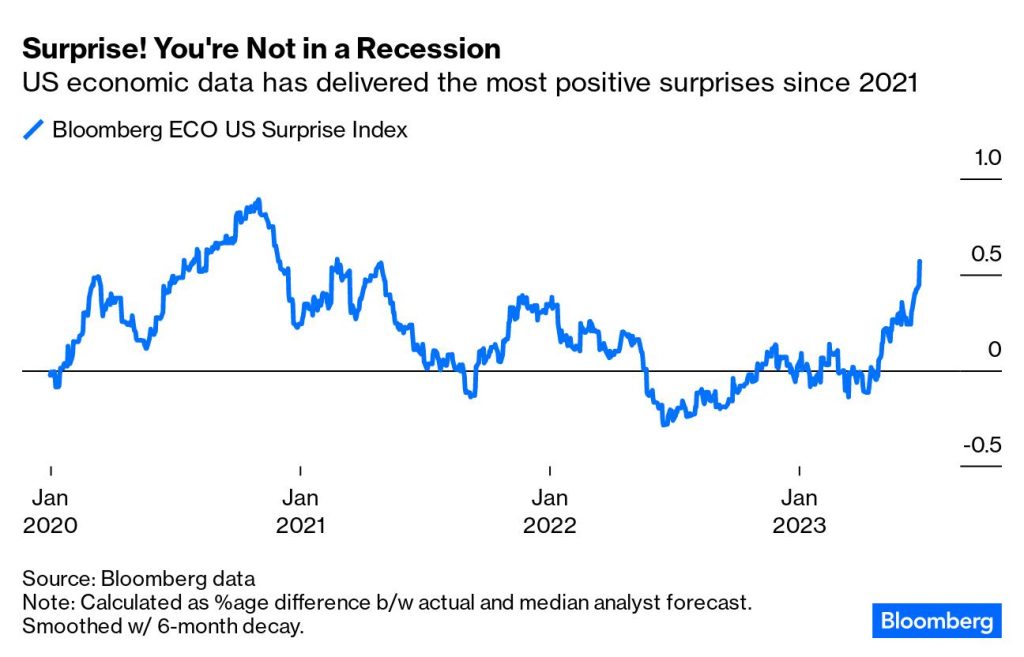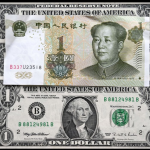Cancel the recession: does soaring gold mean no longer economic doom?
Recently a Bloomberg Opinion writer Jessica Karl wrote that back in the summer of 1971, Richard Nixon shocked the world — not by eating cottage cheese with ketchup, but by chopping the dollar’s connection to gold. Gold prices skyrocketed, and soon after the economy wilted, with a recession followed by stagflation followed by the Sonny Cher Show LOL Ever since, economists have warned that when gold’s value ascends to the heavens, death is near — the death of the economy, that is:
 Another Bloomberg journalist Tyler Cowen mentioned that the precious metal has been considered “a harbinger of disaster for both fiat currency and Western civilization.” But not anymore, Tyler argues: “Gold is no longer a good hedge against bad times, as it correlates with both low-interest rates and global economic growth.” Instead, he assures readers, having high gold prices is perfectly fine because gold is now just like any other cyclical economic asset. But the Associated Press argues that if gold can’t set the timer on the economic dooms day clock anymore, then how are we supposed to tell if we’re about to have a ‘richcession’? Or a “rolling recession”? Or no recession at all?
Another Bloomberg journalist Tyler Cowen mentioned that the precious metal has been considered “a harbinger of disaster for both fiat currency and Western civilization.” But not anymore, Tyler argues: “Gold is no longer a good hedge against bad times, as it correlates with both low-interest rates and global economic growth.” Instead, he assures readers, having high gold prices is perfectly fine because gold is now just like any other cyclical economic asset. But the Associated Press argues that if gold can’t set the timer on the economic dooms day clock anymore, then how are we supposed to tell if we’re about to have a ‘richcession’? Or a “rolling recession”? Or no recession at all?
 (Image credit: Bloomberg)
(Image credit: Bloomberg)
Note: Calculated as %age difference b/w actual and median analyst forecast. Smoothed w/ 6-month decay.
Is It Time to Cancel the Recession Altogether?
A series of positive economic data has prompted forecasters to push back calls for a downturn. Could their narrative simply be wrong, not early? The warnings have been sounded for more than a year: A recession is going to hit the United States. If not this quarter, then by next quarter. Or the quarter after that. Or maybe next year.
So is a recession still in sight?
The latest signs are pointing towards maybe not. In spite of higher loan borrowing costs, thanks to the Federal Reserve’s aggressive streak of interest rate hikes, consumers keep spending, and employers keep hiring. Gas prices have dropped, and grocery prices have leveled off, giving Americans more spending power.
Another Bloomberg journalist Jonathan Levine, wrote that the US economy keeps surprising the economic alarmists, and Tuesday, June 27th’s data is just latest the example:
- Durable goods orders jumped 1.7% (median forecast -0.9%).
- New home sales soared 12.2% (forecast -1.2%).
- And consumer confidence measured by the Conference Board rose to 109.7, the highest since early 2022 (forecast 104).
- Q1 GDP was revised significantly higher
- The final estimate shows the economy grew at 2% in Q1, up from the second estimate’s 1.3% and well above expectations for 1.4% growth.
- Revisions were driven by strong consumer spending and net exports.
- Like jobless claims, resilient consumer strength and an expanding economy give the Fed more ammo to support further rate hikes.
Ed Yardeni’s of Yardeni Research stated the perma-bears will have to postpone their imminent recession yet again based on today’s batch of US economic indicators, which suggest that our “rolling recession” is turning into a “rolling expansion.”
Even before Tuesday’s data, economists had begun to throw in the towel on their consensus projection of a recession starting in the third quarter. Mr Levine states in his article that “at some point during a long streak of consistently underestimating month-to-month data, shouldn’t we all reconsider whether economists’ overarching narrative may simply be wrong, not just early? For the past 15 months or so, economists and strategists have been obsessed with Federal Reserve history and the yield curve. The historical record, of course, showed that Fed increases and inverted yield curves tend to signal a recession not so far down the road, and that may have blinded some analysts to the signs of strength that were right in right in front of them.”
Businesses and households came out of the pandemic flush with cash
Households and businesses came out of the pandemic with strong cash balances and modest debt burdens that have made them extremely resilient to higher interest rates. The jump in mortgage rates cooled housing activity, but it didn’t sink prices because homeowners — many with mortgages below 3% that they were in a fine position to keep servicing — were in no rush to sell. Meanwhile, the job market remained strong thanks to a pent-up demand for labor that has continued to stimulate US consumption.
Homeowners are reluctant to part ways with their low-rate mortgages:
- At least that’s the message pending home sales—which fell for the third straight month—are sending us.
- That, and limited supply isn’t keeping up with demand.
- After a 2.7% drop in May, pending home sales are at their lowest level of the year and are now down 22% on an annual basis.
- Separately, Redfin reports new listings were down 27% YoY in June while active listings dropped by the most (11%) since April 2022.
Conclusion
Will this positive economic streak continue? If the “bears” have one thing working in their favor, it’s resilient core inflation and a Fed that’s determined — perhaps overly so — to bring it back to its 2% target. If you believe that demand is keeping inflation high (and there’s some evidence to that effect), then all of this economic strength will motivate Fed Chair Jerome Powell to take more action. Powell has the tools to break the economy’s back if he decides he wants to. But at the moment, the outlook looks surprisingly sunny just in time for the Fourth of July Holiday, cheers everyone.











